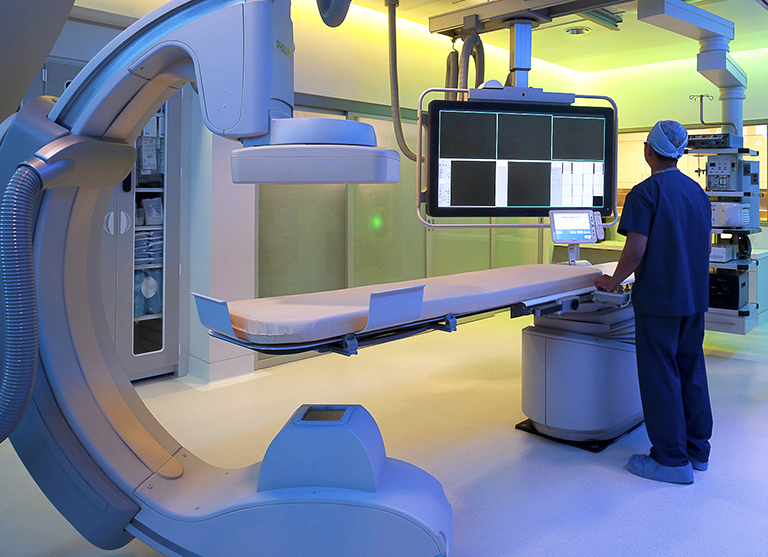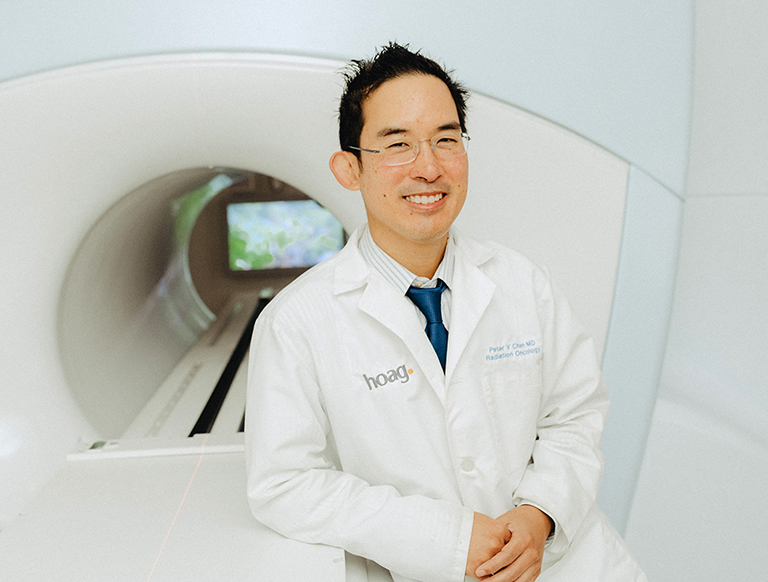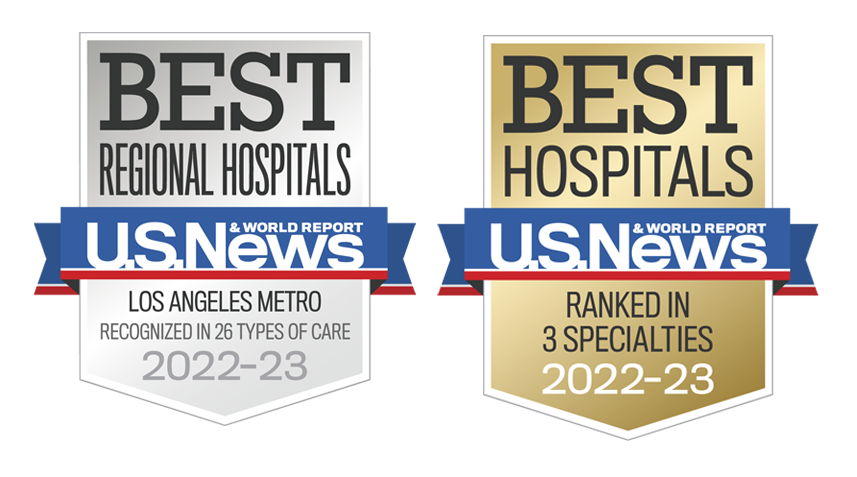
When describing their approach to patient care, Hoag’s renowned specialists like to refer to the “tools” in their “toolbox.” These tools include expertise and compassion, and the collaborative nature of Hoag’s institutes.
Of course, sometimes “tools” literally mean tools. Hoag has invested in the most state-of-the-art technology available to give our patients the edge over cancer, heart disease, brain tumors and more.
ViewRay MRIdian
What it is: The country’s 16th and Orange County’s only MRI-guided radiation therapy system, which combines MRI imaging with radiation therapy delivery in one real-time procedure. It allows radiation oncologists to target tumors while leaving sensitive, healthy structures unharmed.
Why it’s important: Doctors can’t deliver radiation to a moving target—and lungs, the pancreas and other soft tissues move with every breath a patient takes. At most hospitals, this limits the treatment options for certain cancer patients. Not at Hoag. By using high-definition, diagnostic-quality imaging, the ViewRay opens the door to radiation treatment for more patients.
“The advanced capabilities of the ViewRay MRIdian are really opening up a lot of possibilities for treatment. There are some patients who would not be able to receive radiation therapy were it not for this machine. This presents tremendous potential today and into the future.” – Peter Chen, M.D.

Surgical Theater’s Precision Virtual Reality (VR)
What it is: A medical visualization platform. Using 3D medical imaging and VR technology, Surgical Theater allows neurosurgeons to essentially “rehearse” complex surgeries virtually before ever walking into the
operating room. Hoag is the only hospital in Orange County to invest in Surgical Theater.
Why it’s important: Surgical Theater gives surgeons the distinct advantage of knowing ahead of time what complexities await during the most delicate surgeries— knowledge they share with their patients during unique “fly throughs.” Outfitted with Oculus Rift 3D VR goggles, patients can “tour” their brain or cancer tumors and watch a visual preview of the surgery. This elevates patient confidence and improves patient outcomes.
Robotic-assisted Surgical Technology
What it is: Hoag’s robust and successful robotic surgery program is significantly impacting the way surgeons approach many procedures and, in many cases, it can mean faster recovery time and less pain. At Hoag, robotic-assisted surgery is becoming the standard of care for many procedures in cancer, women’s health, cardiovascular, thoracic and general surgery. Hoag has been designated a Center of Excellence in Robotic Surgery (COERS) from the Surgical Review Corporation.
Why it’s important: Robotics has transformed the way surgeons approach certain gynecologic, urologic, lung, head and neck, pancreatic and colorectal tumors. Using a minimally invasive approach, robotics
has also turned certain gynecologic procedures, such as hysterectomies, into outpatient procedures, eliminating the need for a hospital stay. Robotics have also expanded treatment opportunities for older, sicker cardiac patients who might not otherwise be eligible for mitral valve and other repair surgeries.

Breast Tomosynthesis, or 3D Mammography
What it is: An advanced imaging technology for breast cancer detection. Hoag was one of the first hospitals in California and the U.S. to adopt this leading-edge technology.
Why it’s important: 3D mammography helps detect cancers earlier and more effectively, especially for women with dense breast tissue. Approximately 75% of women in their forties have dense breasts, and while this percentage reduces with age, 42% of women in their sixties also have dense breasts—making this an important tool for early, effective detection.
Cardiac Catheterization Labs
What they are: Cath Labs allow cardiology specialists to diagnose and treat heart conditions using minimally invasive catheter procedures, instead of surgery. The Jeffrey M. Carlton Heart & Vascular Institute is home to eight cath labs, including the Allan & Sandy Fainbarg Electrophysiology (EP) Cath Lab Suite, the first-ofits- kind electrophysiology cath lab, which focuses on arrhythmia management.
Why they’re important: Hoag’s cath labs are leading the nation in minimally invasive procedures and providing more options to more people to improve their quality of life. By integrating diagnosis with treatment, Hoag’s Cath Labs lead to safer, better outcomes and faster recovery.









